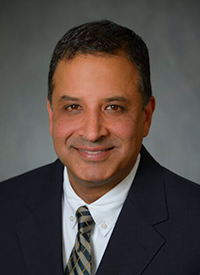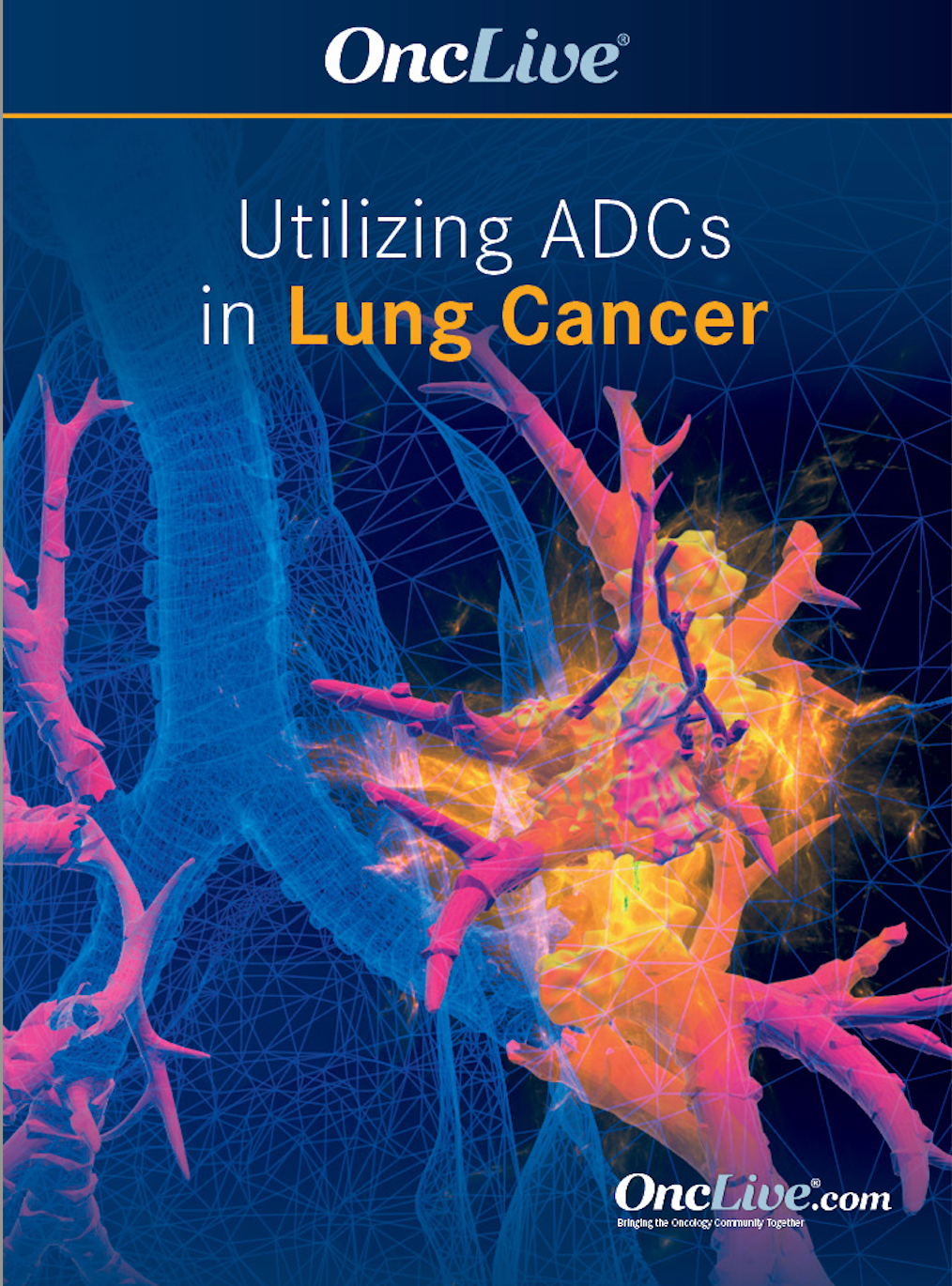Publication
Article
Prominence of HER2 Alterations in NSCLC Trigger Questions About Best Practices
Author(s):
As new classes of agents deliver promising results for patients with HER2-mutant non–small cell lung cancer, new questions surrounding optimal identification tactics, sequencing, and treatment of patients arise.
Timothy Craig Allen, MD, JD

HER2 is fast becoming an emerging biomarker of clinical value in lung cancer for the small subset of patients with HER2-mutant disease. As new classes of agents deliver promising results for patients with HER2-mutant non–small cell lung cancer (NSCLC), new questions surrounding optimal identification tactics, sequencing, and treatment of patients arise.1
“HER2 has joined the team adding to the armamentarium of biomarkers tested for personalized therapies,” Timothy Craig Allen, MD, JD, said in a recent OncLive Peer Exchange®. “Data have shown substantial survival [benefits]—we’re talking now about toxicity, we’re talking about resistance, this [marker] is going to be part of the discussion as it grows, and we’ll come up with the solutions to address the unmet needs.”
In a discussion centered around the clinical experience of testing patients for and treating those with HER2-mutant disease, a multidisciplinary panel comprising a pathologist, a pulmonologist, and thoracic oncologists tackled questions that arise from diagnosis to appropriate sequencing of available agents. They also discussed the limitations that 1-markersolves-all approaches present.
Testing—Where To Begin?
Biomarker testing for patients with lung cancer should be initiated once a diagnosis has been rendered by the pathologist, according to Allen.
Allen noted that he is a proponent of reflex testing when it comes to lung cancer. “There should be no hesitation to proceed to testing,” he said. “We do want to move forward quickly with these patients, many of whom have late-stage disease and are very sick; we want to move it as quickly as possible. With adenocarcinoma, I do suggest we move forward immediately with molecular biomarker testing. I’m a big fan of next-generation sequencing [NGS] because it can be done relatively quickly. It’s a one-shot [test] that hits all the markers that need to be hit, because they continue to increase over time.”
Allen cautioned that NGS testing may deliver more than is necessary for treatment and to keep a focus on which markers are actionable for their patients. “What we get from NGS goes far beyond what I would call the standard-of-care testing. And that’s OK. We must be very careful what we use [and ask whether it] is really meaningful.”
Mark A. Socinski, MD

Obtaining testing clearance and/or samples, however, is not always easy, the panelists noted. “You don’t always know that there’s adequate tissue and sometimes the specimens are rather scarce, and they get used up,” Mark A. Socinski, MD, said about sample procurement. “The pathologist may not know enough about the case, and they want to do all of these immunohistochemical [IHC] stains to make sure it’s an adenocarcinoma [and] not arising from someplace else, and not metastatic and that sort of thing. So tissue is sometimes an issue where I don’t know that typically when I see patients, so I will do plasma-based testing concurrently with a more rapid turnaround time,” he said.
Ticiana Leal, MD

Ticiana Leal, MD, added that in her clinical experience, broad molecular testing at diagnosis is essential and a part of her standard of care now for patients with newly diagnosed nonsquamous NSCLC. “Although tissue biopsy NGS remains the gold standard in that setting, liquid biopsy can certainly address certain challenges that we face in the clinical setting,” she said. “Putting it in the context of the patient who [for example, may have] multiple small brain metastases, it’s essential to get results as quickly as we can and when you use liquid biopsy, you’ve got a minimally invasive procedure that can identify multiple biomarkers for which we have FDA-approved therapies.”
The NILE trial (NCT03615443) evaluated the noninferiority of tissue vs liquid biopsy in detected National Comprehensive Cancer Network (NCCN)-recommended biomarkers for the first-line treatment of NSCLC. Results showed that among 282 evaluable patients, 31.6% had an actionable biomarker (n = 89). These were detected at rates of 21.3% with tissue samples, and 27.3% using liquid biopsy cell-free DNA (cfDNA) analysis.2 Clinical outcomes showed that time to treatment for patients was significantly improved in those who had cfDNA analysis compared with tissue samples, at 18 vs 31 days (P = .0008).2
“I don’t know that either [test] is a gold standard. I see them as complementary,” Socinski said. “What I say to my patients is, cancer is a disease of your DNA, and we must interrogate the DNA because we now have 10 biomarkers in which the FDA has approved therapies in the United States.”
Solange Peters, MD, PhD

Outside of the United States, moderator Solange Peters, MD, PhD, said, “In Europe, it’s very important to note that we are not reimbursed for concurrence due to our testing. We must make a choice: liquid or solid [test]? What it means to get a biopsy, sometimes in difficult circumstances, is that it might be [optimal] to do liquid first because you lose time if you need a biopsy later on.”
Anil Vachani, MD, MS

For HER2 testing, Peters asked what guidelines Anil Vachani, MD, MS, follows. “We test a relatively broad panel that is done for all solid tumors for efficiency’s sake. It is constantly evolving, but we test a few hundred genes that make sense across all solid tumors, including HER2,” he responded.
Beyond making the decision of which route to follow, Leal said that it takes a collaboration to diagnose and execute treatment options. “I want to highlight the importance of multidisciplinary teams in lung cancer care [and how that] has also really changed how we diagnose and deliver this care and improve outcomes for our patients,” she said. “This is an example with our panel, having a multidisciplinary panel and learning together and continuing to build together from diagnosis, getting adequate tissue, having pathology involved in those decisions about molecular testing and reflects testing. It really takes a village—with the rest of the team, surgery and radiation and palliative care and so on—and I think every individual has a really important role in delivering that care, and we do it better when we do it together.”
HER2—What Road To Take
Peters explained that although HER2 is wellknown in the breast cancer space, thoracic oncologists are more familiar with its loose relation: EGFR. “HER2 is a very specific target in terms of molecular biology, but how we will act on this target in lung cancer?” she inquired.
Allen explained that although HER2 is a late comer to the lung cancer space, it has not been easy to replicate the outcomes observed in other tumor types. “We’ve been inspired by successes in breast cancer and in the [gastrointestinal] space, [but] we’ve been disappointed with early results of diagnostics and testing with HER2 in lung cancer because we were following the same gameplan as we do in breast cancer,” he said.
In explaining why that might be the case, Allen said it comes down to the type of HER2 is present in lung cancers. “We can see that up to 30% of lung cancers can have HER2 overexpression, as identified by IHC just as we might do with breast cancer. But TKIs have not shown clinical value for patients with HER2-positive lung cancer and that’s disappointing.3 Approximately 5% of lung cancers have HER2 mutations. Then there are some that are amplified, which is of course, different from protein expression. Why one can have protein expression at such a high percentage, and maybe only 2% to 5% that really have HER2 point mutation or amplification is unknown. We cannot depend upon IHC to help guide direction in the lung world regarding HER2. This is why we need to use NGS and see what we’ve got.”
Despite these unknowns and setbacks with TKIs, Allen said that HER2 is the beginning of a new world. Further, the noted that once these differences are understood and treatments can be attached to results, optimal outcomes will soon follow.
Finding the Right Agents
Antibody-drug conjugates (ADCs) have demonstrated more positive effects than TKIs for patients with HER2-mutant NSCLC.3 In a phase 2 basket trial (NCT02675829), 18 patients with HER2-amplified or -mutant disease received ado-trastuzumab emtansine (T-DM1; Kadcyla) and had a partial response rate of 44% and a median progression-free survival (PFS) of 5 months.4
“What they saw was an interesting signal of activity,” Leal said adding that based on these data the NCCN guidelines included HER2 as an emerging biomarker. Since the trial, other ADCs including fam-trastuzumab deruxtecan-nxki (Enhertu) have emerged and even gained approval for the treatment of patients with HER2-mutant lung cancer.5
The approval was based on findings from a cohort of patients treated in the phase 2 DESTINYLung02 (NCT04644237) trial. Patients in the trial were randomly assigned to 2 dose levels of trastuzumab deruxtecan (5.4 mg/kg vs 6.4 mg/kg). Among patients in the primary efficacy population (n = 52), treated at the approved dose of 5.4 mg/kg, the objective response rate (ORR) was 58% per RECIST 1.1 criteria with a median duration of response (DOR) of 8.7 months.5
In the concurrent DESTINY-Lung01 trial (NCT03505710), 91 patients with metastatic HER2-mutant NSCLC were treated with trastuzumab deruxtecan at 6.4 mg/kg dose. The ORR was 55% with a DOR of 9.3 months. Patients had a median PFS of 8.2 months and a median overall survival of 17.8 months.6
“We’ve seen the approval by the FDA based on the DESTINY-Lung02 trial, which randomly assigned patients to 2 doses and the 5.4 mg/kg was the one that was selected as the FDA-approved regimen,” Leal said. “The responses were consistent across the 2 doses. However, the safety profile certainly was better with the lower dose.”
Socinski said that because trastuzumab deruxtecan and T-DM1 are conjugated to atropisomers, chemotherapy-like adverse effects (AEs) may be common. “These are myelosuppressants, and you have to be careful. Other events include increases on liver function tests, low rates of neuropathy, but still possible, and alopecia, which are typical cytotoxic AEs which many oncologists are familiar managing.”
Although interstitial lung disease (ILD) has seen better management across tumor types, Vachani cautions that for patients with lung cancer, some of the clinical trial data may not reflect the real-world population of patients. “Results of DESTINY-Lung01, which are published in the New England Journal of Medicine, showed an incidence rate of ILD or ILD-like disease of approximately 25%, which is quite high,” he said noting that several patients discontinued therapy (n = 5).6 “Importantly, the trial excluded any patient who had any evidence of ILD prior to enrollment, which is also problematic in practice, because we have patients who could have mild disease in standard practice. We must be careful about [watching for] that for this agent.”
Starts and Stops For New Agents
Poziotinib, an investigational TKI, was another agent under investigation for the treatment of patients with HER2 exon 20 insertion mutation–positive NSCLC. However, in October 2022, the FDA’s Oncologic Drugs Advisory Committee voted 9 to 4, that the benefits of poziotinib do not outweigh its risks for the treatment of this population.7
The new drug application was based on findings from cohort 2 of the phase 2 ZENITH20 trial (NCT03318939), in which poziotinib, given at a once-daily dose of 16 mg, led to an ORR of 27.8% (95% CI, 18.9%-38.2%) in this population (n = 90).8,9 The median DOR was 5.1 months (95% CI, 4.2-5.5) and the median PFS was 5.5 months (95% CI, 3.9-5.8). Despite the modest improvements in outcomes for this subgroup, the panel argued that efficacy results failed to show improvements over current therapy, had higher rates of toxicity, had inadequate dosage optimization, and delayed confirmation of benefit with the TKI.7
Another HER2 selective TKI is BI 1810631, being evaluated in a phase 1 study of solid tumors (NCT04886804).10 “BI 1810631 is in development in phase 1, and there are others as well,” Leal said. “Depending on the tolerability or the toxicity profile, if we go into combinations, maybe that is something that we need to continue to explore. And then importantly, as we understand more about mechanisms of resistance, can we sequence these agents?”
Socinski concluded by saying he wants to have as many options as possible in the space. “We are seeing things [in] survivorship in lung cancer that I didn’t see 10 to 15 years ago, with both immunotherapy as well as the targeted therapy. The ability to have as many tools as we possibly can to stop progression and hopefully induce some regression of disease and keep patients with a good quality of life with a balance of toxicity, I think is what we’re all looking for.”
References
- Cooper AJ, Gainor JF. Human epidermal growth factor receptor 2–mutant non–small-cell lung cancer: continued progress but challenges remain. J Clin Oncol. 2022;40(7):693-697. doi:10.1200/ JCO.21.02550
- Page RD, Drusbosky LM, Dada H, et al. Clinical outcomes for plasma-based comprehensive genomic profiling versus standard-of-care tissue testing in advanced non–small cell lung cancer. Clin Lung Cancer. 2022;23(1):72-81. doi:10.1016/j.cllc.2021.10.001
- Passaro A, Peters S. Targeting HER2-mutant NSCLC – the light is on. N Engl J Med. 2022;386(3):286-289. doi:10.1056/NEJMe2119442
- Li BT, Shen R, Buonocore D, et al. Ado-trastuzumab emtansine for patients with her2-mutant lung cancers: results from a phase II basket trial. J Clin Oncol. 2018;36(24):2532-2537. doi:10.1200/JCO.2018.77.9777
- FDA grants accelerated approval to fam-trastuzumab deruxtecan-nxki for HER2-mutant non-small cell lung cancer. FDA. Updated August 16, 2022. Accessed November 10, 2022. bit.ly/3hSydmB
- Li BT, Smit EF, Goto Y, et al; DESTINY-Lung01 Trial Investigators. trastuzumab deruxtecan in HER2-mutant non-small-cell lung cancer. N Engl J Med. 2022;386(3):241-251. doi:10.1056/NEJMoa2112431
- Oncologic Drugs Advisory Committee (ODAC) Meeting. FDA. September 22, 2022. Accessed September 22, 2022. bit.ly/3dFRtlU8
- Spectrum Pharmaceuticals announces acceptance of new drug application filing for poziotinib. News release. Spectrum Pharmaceuticals; February 11, 2022. Accessed September 22, 2022.bit.ly/3gGReox
- Le X, Cornelissen R, Garrassino M, et al. Poziotinib in non–small-cell lung cancer harboring HER2 exon 20 insertion mutations after prior therapies: ZENITH20-2 trial. J Clin Oncol. 2022;40(7):710-718. doi:10.1200/ JCO.21.01323
- Heymach J, Opdam F, Barve MA, et al. A phase I, open-label, dose escalation, confirmation, and expansion trial of BI 1810631 as monotherapy in patients with advanced/metastatic solid tumors with HER2 aberrations. J Clin Oncol. 2022;40(suppl 16):TPS9143. doi:10.1200/ JCO.2022.40.16_suppl.TPS9143










